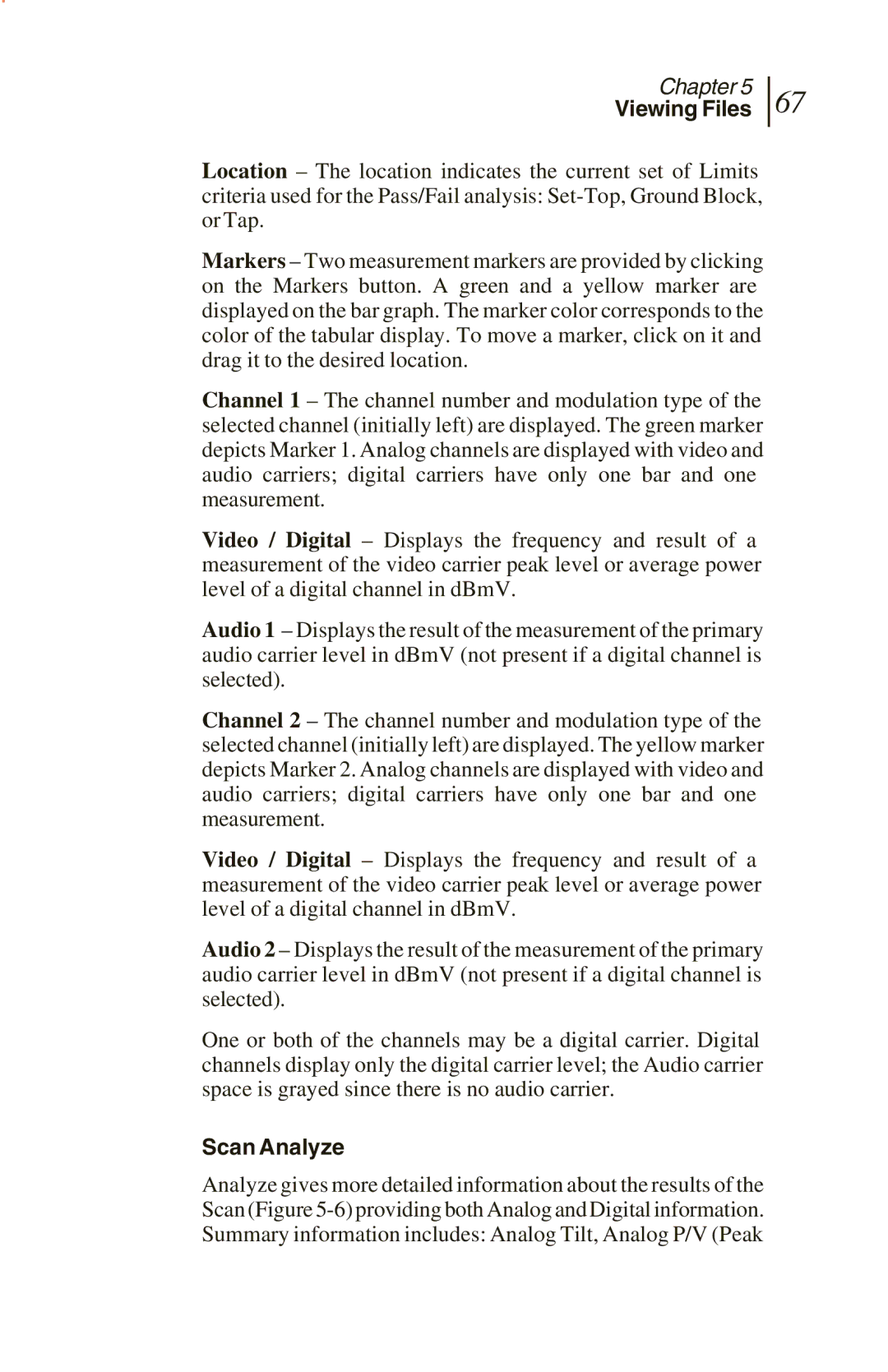
Chapter 5
Viewing Files
67
Location – The location indicates the current set of Limits criteria used for the Pass/Fail analysis:
Markers – Two measurement markers are provided by clicking on the Markers button. A green and a yellow marker are displayed on the bar graph. The marker color corresponds to the color of the tabular display. To move a marker, click on it and drag it to the desired location.
Channel 1 – The channel number and modulation type of the selected channel (initially left) are displayed. The green marker depicts Marker 1. Analog channels are displayed with video and audio carriers; digital carriers have only one bar and one measurement.
Video / Digital – Displays the frequency and result of a measurement of the video carrier peak level or average power level of a digital channel in dBmV.
Audio 1 – Displays the result of the measurement of the primary audio carrier level in dBmV (not present if a digital channel is selected).
Channel 2 – The channel number and modulation type of the selected channel (initially left) are displayed. The yellow marker depicts Marker 2. Analog channels are displayed with video and audio carriers; digital carriers have only one bar and one measurement.
Video / Digital – Displays the frequency and result of a measurement of the video carrier peak level or average power level of a digital channel in dBmV.
Audio 2 – Displays the result of the measurement of the primary audio carrier level in dBmV (not present if a digital channel is selected).
One or both of the channels may be a digital carrier. Digital channels display only the digital carrier level; the Audio carrier space is grayed since there is no audio carrier.
Scan Analyze
Analyze gives more detailed information about the results of the Scan (Figure
